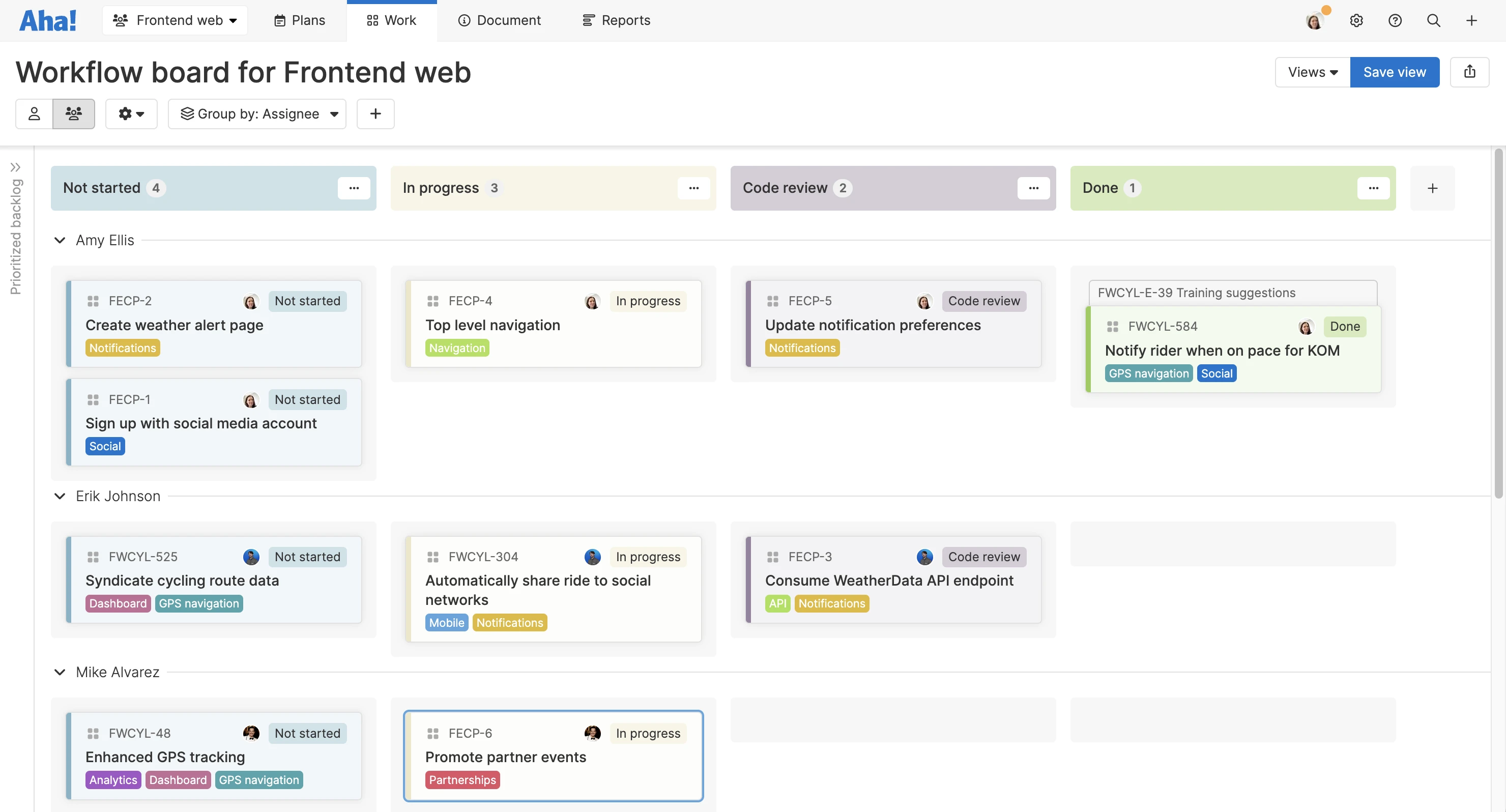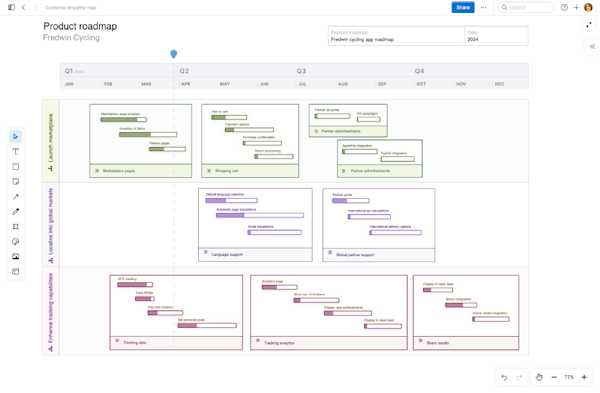How development teams implement kanban
Last updated: January 2025
The Japanese word for signboard. A framework for agile software development. A pull-based workflow system. These are a few different ways to define kanban — all are correct.
For the purpose of this guide, kanban is a system for visualizing work. It encourages continuous improvement of processes, elimination of waste, and quick delivery of software. If your development team has adopted kanban, you might be looking to validate whether you have done it right. There is no one "correct" way to implement kanban. But this guide shares the basics of why and how development teams implement kanban:
Set up a kanban board in Aha! Develop — free for 30 days.

On this kanban-style board in Aha! Develop, one card represents each work item. Columns of cards show the status of each item.
1. Choose how to visualize work
First, capture your existing processes for delivering new functionality. Add cards to your kanban board to represent everything the team is working on, and create vertical columns to show each step of your workflow. Your board should display the full cycle of what it takes to deliver value to your users.
Depending on what you are working on and how your organization functions, you might want to add interstitial columns that represent necessary waiting stages between active work. Either way, remember that your board is not fixed. You will iterate and evolve it over time as you incorporate feedback from the team.
Aha! Develop best practices:
2. Set work-in-progress (WIP) limits
How much work is too much? Set a limit for the number of cards that can be in each column at a given time. This helps you create a smooth workflow so you can optimize productivity. Some development teams set WIP limits by estimating work in story points or individual capacity.
For example, you could assign a certain number of story points to each card and determine a maximum number of points per column. Or you could decide on a WIP limit of two cards per user so no team member goes over capacity.
If you are just starting out, do your best to set WIP limits based on your past experience and the number of teammates. You will have many opportunities to revise WIP limits as you learn.
Aha! Develop best practices:
3. Codify policies
Create certainty in the workflow so people can be most productive. No one should have to guess. Explain exactly how you will manage the backlog by answering these questions:
Who can add cards?
Who can remove cards?
Who can prioritize what to work on next?
To answer these questions, many engineering teams work closely with product management and project teams to clarify what is most important. This informs what should go on the kanban board.
Document the definition of done and any associated quality assurance checks. Define how you will handle defects and bug fixes. Then, there are the stickier questions.
How will you handle new requirements that are added to WIP by key stakeholders?
What do you do about scope creep?
How do you handle blocked work?
You might not have perfect answers here — but transparency is better than ambiguity.
Aha! Develop best practices:
4. Measure and manage flow
Once you start using the board to actively manage your workflow, identify where bottlenecks and issues occur. Look deeper into what causes delays, and add extra columns or statuses so your board shows the way you work.
Continuously improving also means that you need performance evaluation criteria. You can use data such as cycle time and throughput to measure flow. Be sure to look for opportunities to reduce the time it takes to complete work.
Aha! Develop best practices:
5. Optimize
Each member of the team is responsible for giving critical feedback to improve each step of the workflow. During your regular team meetings, carve out time for folks to share their suggestions and observations.
When major work ships, set aside time to review what went smoothly and what could be improved. Continue to iterate on your process. As you make changes, measure the outcomes and gather feedback from the team. Roll back any changes that do not yield positive results.
Aha! Develop best practices:
The most successful development teams have a consistent, repeatable process in place for approaching work. If you are looking for a development tool that your team can use to work more efficiently and deliver faster, try Aha! Develop now.


